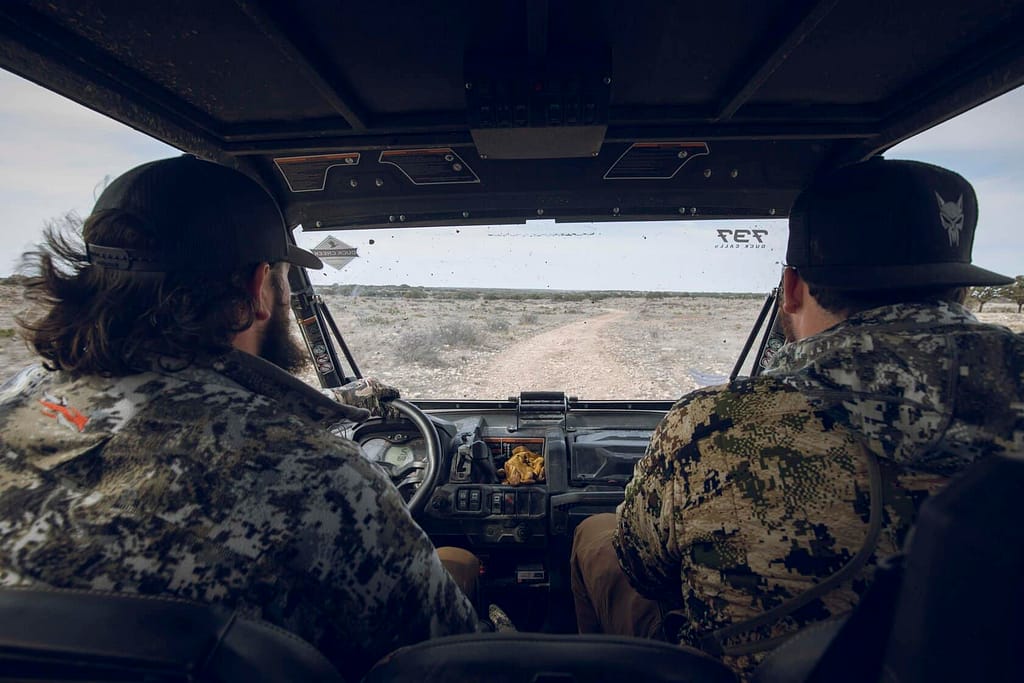
The January sun is weak by early afternoon. Grass, brittle and brown. Low-lying cactus punctuate the open area strewn with small rocks and a smattering of mesquite trees. Jake and his friends use an ATV to drive far from town along a well-used dirt road. “What’s the plan?” one of the guys in the backseat asks Jake. A slight pause. “Kill shit; get money.”
Jake and his three buddies are participating in the West Texas Big Bobcat Contest. Over the next 23 hours, this foursome will compete against 716 other teams for prizes, cash, and equipment, to kill as many foxes, coyotes, and/or bobcats that they can within the regulatory timeframe.
Jake parks the vehicle. In full camouflage, the group unloads several rifles, ammunition, and calling apparatus. Then, with five words, he aptly describes this whole affair: “Things are about to get nuts.”
It is predator hunting contest season across the United States. Predator hunting competitions are popular events legally occurring on private, state, and federal lands in 43 of the 50 states. Tonight’s contest is taking place simultaneously with another local hunt, one that includes racoons. With 717 teams of approximately four to a team in Big Bob Cat, and upwards of 400 teams of four in the neighbouring contest, there are almost 3,000 hunters shooting for sport, from dusk until dawn, in a geographic radius of approximately two hours driving distance from the weigh-in site.
Jake and his team have been out every weekend, participating in every contest. From the multiple high purse contests like the Gatesville Varmint Contests and The Big Bob Cat Contest to a myriad of local and church-sponsored competitions, hitting all of them, except the special children’s varmint contests.
The West Texas Big Bobcat requires an entry fee of $220 per team and the fresh carcasses of at least five foxes or five coyotes for teams to qualify to win the ultimate prize, the heaviest bobcat killed. “When I first began,” says Jake, “the contests were not as common as they are now, maybe one a month. Now we’ve had one every weekend for the last eight weekends and we have four more to go. It’s a sport that has grown immensely because everyone is getting into it and everyone enjoys it.”
States typically hold predator hunting contests over the winter season. Pennsylvania, for example, held approximately 30 hunts from January to March 2019, including the Mosquito Creek Sportsmen’s Contest, the largest coyote hunt in the U.S. In the 2019 Mosquito Creek event, 4,836 registered hunters brought in 193 coyotes, with 53-pound coyote breaking club records. The top two prizes were more than $9,000 each, and the total hunt purse was more than $48,000, according to the Centre Daily Times.

Killing enough animals to have a chance at the purse requires strategy, specialized equipment, and access to land with permission to hunt. Each team is in it to win, and that can’t happen by simply walking into the woods and waiting for your prey to pass by. Many will use distress calls that mirror a wounded baby to call in an animal.
Back in West Texas, Jake sets up a loudspeaker in front of a small fur tail that vibrates. Then, as the simulated cacophony of pain starts, the team waits. The ploy works and a fox approaches the area. One of the guys fires a shot. “One down,” he says, carrying the carcass by the tail and tossing it into the back of the vehicle.
“Most people are shocked to learn that these killing contests are legal and happening on our public lands,” says Camilla Fox, Founder and Executive Director of Project Coyote. “We are allowing people to kill bobcats, foxes, coyotes and wolves with no limits, for prizes, money and entertainment.” Project Coyote is co-leading a campaign comprised of scientists, conservationists, hunters, ranchers, and local representatives across the country to educate states about why predator hunting does not work and how it damages eco-systems. The organization, along with its wide range of coalition partners, has successfully advocated against the contests, resulting in seven states outlawing indiscriminate predator contests.
The Humane Society, Project Coyote’s ally and co-leader of a National Coalition to end wildlife killing contests (read their 2018 undercover Investigative report here), speaks to the unethical nature of the contests:
One of the most chilling aspects of killing contests is the use of electronic calling devices to attract coyotes into rifle range with sounds that imitate the cry of a coyote in distress. Coyotes, like humans, feel a strong bond with other members of their species, and when they hear this cry for help, they come to investigate. Manipulating animals’ natural compassion to lure them into gun range is not hunting—it is a reprehensible practice condemned by most hunters and non-hunters alike. Dependent young may also be orphaned during these events and left to die from starvation, predation, or exposure. In fact, some contests—including the government-run Georgia Coyote Challenge—are scheduled to occur during the pup-rearing season with the stated purpose of ensuring that fewer coyote pups survive.
Despite this, the contests have strong support in many areas.
Varmint noun informal. Dialect
A troublesome wild animal (Oxford English Dictionary)
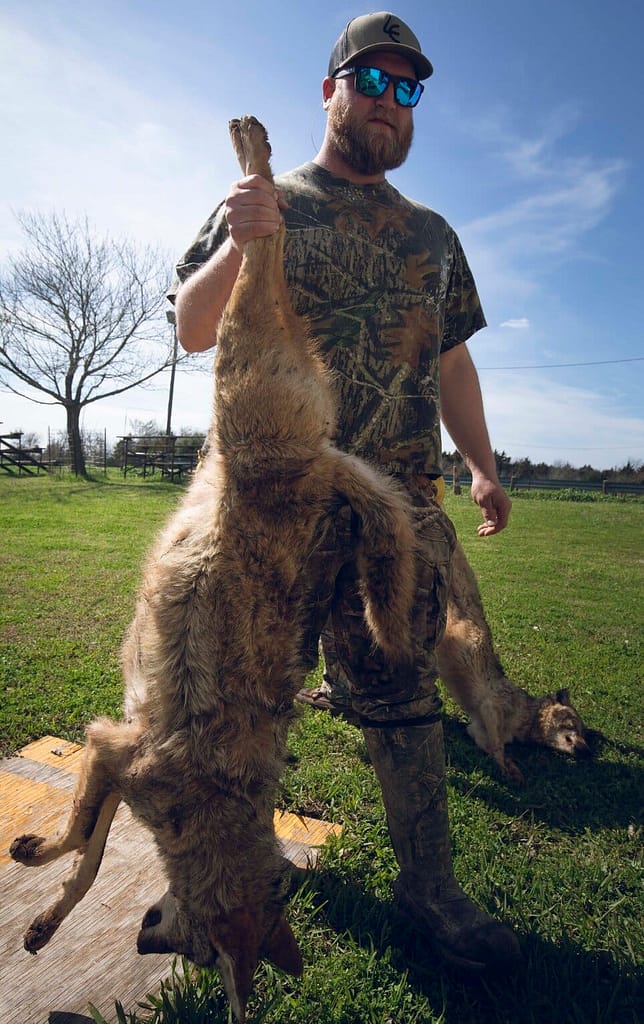
Most predators have already been convicted in the court of public opinion in our folklore, media, and fairytales for decades upon decades. In the old Looney Tunes cartoons, Wile E. Coyote, Bugs Bunny’s nemeses, continuously fail to catch and kill the rabbit. Instead, he is consistently outwitted, suffering humiliating dynamite explosions, drownings, falls from cliffs and various calamities. In every episode, audiences are entertained by seeing the coyote blow up or get electrocuted. Meanwhile, in “Little Red Riding Hood,” the wolf lays in wait, tricking innocent children and grannies, stoking fear in the hearts of impressionable young minds.
Coyotes, foxes and wolves have been vilified to such an extent that society has been conditioned to believe that carnivores are evil troublemakers, their lives worthless and that killing them in mass numbers has no adverse impact. But this belief is incorrect.
Since the earliest domestication of animals in the United States, the government has been called upon to help control predators to protect livestock, domestic pets, crops, and game supplies for hunting. Initial wildlife management reasoning advocated wholesale eradication of predators. However, it was later discovered that when apex predators, such as wolves, are eliminated, this significantly disrupts the balance of nature and paves the way for a proliferation of other species to flourish, such as coyotes and bobcats, cougars, and foxes. Similarly, when lesser predators are killed in large numbers, the remaining animals become more resilient and can reproduce in larger numbers.
In an age where we have more advanced means to conduct scientific research to guide sound wildlife management policies, federal and state governments have been slow to adjust. Research increasingly shows that predator killing is not the most effective means of protecting domestic animals. Simultaneously, research is consistently revealing how predators are vital for healthy ecosystems. One recent study shows how wolves have stabilized the ecosystem within Yellowstone National Park.
In 2016, National Geographic ran a feature, The Case for Mass Slaughter of Predators Just Got Weaker, illuminating a research study that shows sound science does not support predator killing as an optimal means of controlling predation.
These findings were made five years ago, and, yet public policy has barely shifted. The fervent proponents of predator-killing contests argue that they are soundly within their legal rights, stating they are helping ranchers by killing as many predators as possible. Opponents argue that new science reveals that indiscriminate predator killing is not an effective means of wildlife management. A statement of Opposition to Wildlife Killing Contests, signed by over 70 conservation scientists across the country, asserts that there is “no credible evidence that indiscriminate killing of coyotes or other predators effectively serves any genuine interest in managing other species.”
Big Bobcats Are Big Business
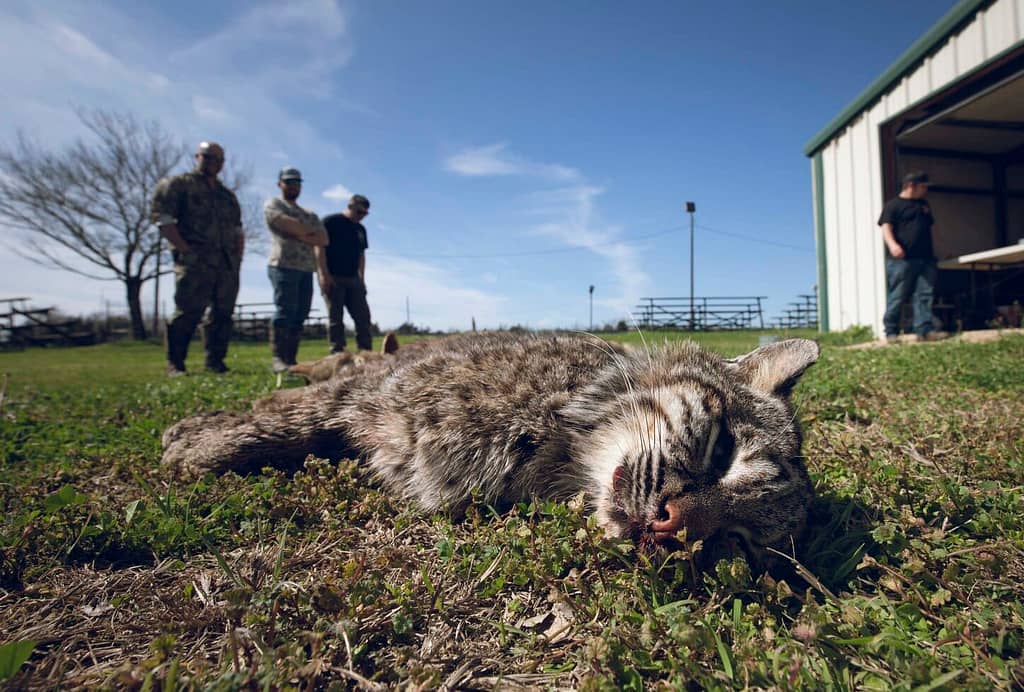
Time is up for participants of the first of three West Texas Bobcat Contests. Contestants are gathering in the parking lot of the 4-H club. Of the 717 teams, only those who believe they have a chance at a prized park their rig, unload their kills and stretch out each animal in neat rows to be counted and temperature tested for freshness. Bleary-eyed from being up all night, cups of coffee in some hands, beers in others, the participants make up a sea of dusty boots and dirt-caked tires. Whatever adrenaline fueled the long hours of the hunt is now wearing off. Exhaustion hits a peak just as a new energy kicks in. A loudspeaker in the background makes announcements, calls out raffle prizes, and plays music. A commentator sends out “Thank you” to an extensive list of national and local supporters. Hunters stroll around under the guise of comradery, checking out their competition. Two men stand proudly behind rows and rows of foxes, while a woman with a thermometer and a notepad painstakingly inspect each animal.
“How did it go out there?” I ask, “It looks like you guys did really well.”
The men grin. “Yeah. We’ve been working at this for a long time. We have a secret spot.” they both answer, voices confident with impending success.
“Do you think you have a chance at the win today?” I ask.
“We sure do, ma’am,” one says, “we only went for foxes, no bobcats. We got 94. I haven’t seen anyone else near that today.”
Hundreds upon hundreds of lifeless bodies, many with entrails spilling out, cover much of the lot. The smell of death is pervasive, even as we are outside—fresh blood and a musty, sickening scent that combined with the visual of piles of dead bodies, makes me think of historic images and stories from concentration camps or other large-scale massacres. The carnage is disturbing on many levels. Though, few seem to notice.
The largest bobcats are dragged by the neck through the dirt lot, into the arena, with pocket chains: a metal cuff and chain link lead, small enough to keep in your pocket and then hook to the animal so you don’t have to bear the weight of it. Pocket chains are being given as prizes inside.
The cats are weighed in the arena. Names are called out to signal when potential winners can go in for their polygraph tests to ensure that they did not cheat. Families have gathered to greet their hunters and community members take seats on the bleachers to watch the show. Raffle prizes are handed out, with sponsors ranging from well-known national brands to the local farm supply store. The winning team with the heaviest bobcat will take home $50,000. With one of the highest purses in the nation, teams now fly in from other states to compete in this event. The vibe is festive and anticipatory. Contestants now have a second wind and are regaling each other with stories.
“….then I realized it was a German Shepard,” one young man was telling another, “but I had already shot it.”
A couple is watching the raffle. The woman appears to be one of the only female team members here. Her husband has been involved in these contests since the beginning. “It was always a lot of fun,” he says. “but now, this thing has gotten so big that people are coming in and buying out landowners for hunting rights, pushing other people out of it. The competition has gotten pretty intense.” He looks around, down at his feet, then fixes a stare at his raffle ticket.
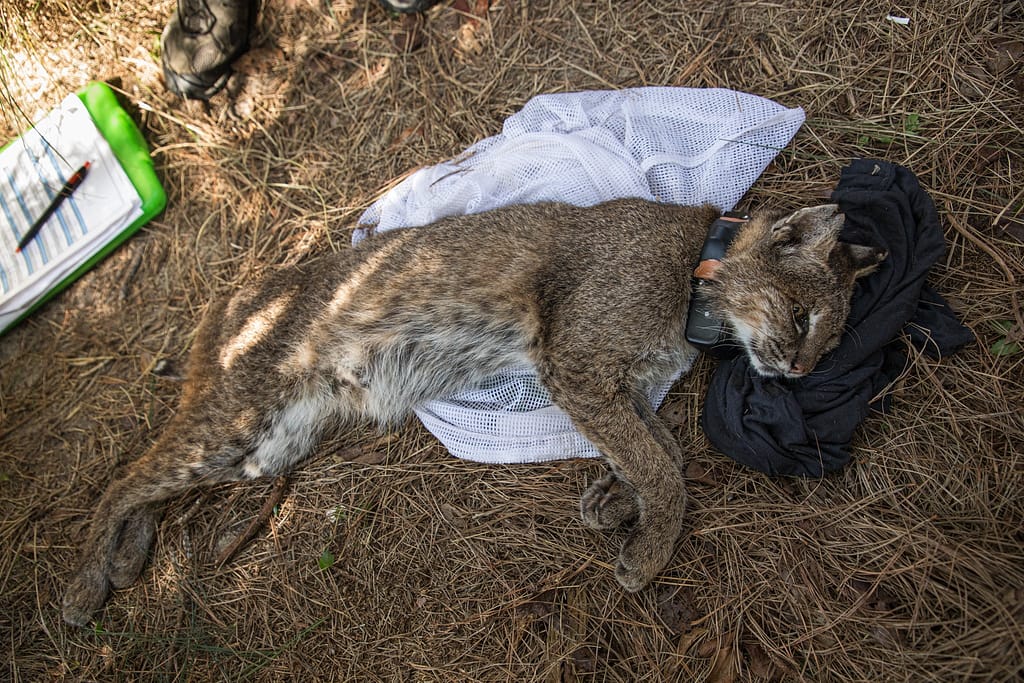
His wife says, “I find it exhilarating. I operate the lights.” Still dressed in her clothes from last night, hair down now and slightly fluffed, her tone shifts as she recalls what she loves about the hunt. “I set the lights and wait. When the lights shine on the animals and I can see their eyes, that is what is thrilling. I don’t even care about the killing part. But, when I see those eyes…they are yellow and all lit up in the light, and I yell: ‘Kill it! Kill it! Kill it!’”
Her husband looks up from his raffle ticket, but his number has still not been called. “It’s still fun,” he says, even as his tone sounds a bit unsure. “But so much competition. It used to be a small guy thing to help out the ranchers. Now it is a massive sport.” He seems to be speaking to the out-of-control nature of what moved from low-key wildlife management to high-stakes massacres. As if he senses he might be stepping into the wrong territory he adds, “The PETA people don’t understand. It’s is all good for them to live in their cities with their little poodle dogs—but they don’t know the real issues that people face with predators killing their livestock.”
By the end of the West Texas Big Bobcat Contests in 2020, three per month from January to March, there were a total of 1,816 competing teams (approximately 4,000 hunters or more) with a cumulative pay-out of $363,200.00 in prize money.
Helping Out Ranchers?
The winding roads of Hillingdon Ranch, located in the Texas Hill Country and continuously operated by the Giles family since 1887, pass through undulating hills with sheep, flat grasslands with goats, cattle and deer, and lead to several outbuildings where various family members live. The ranch contains over 13,000 acres of the natural landscape, carefully and sustainably managed.
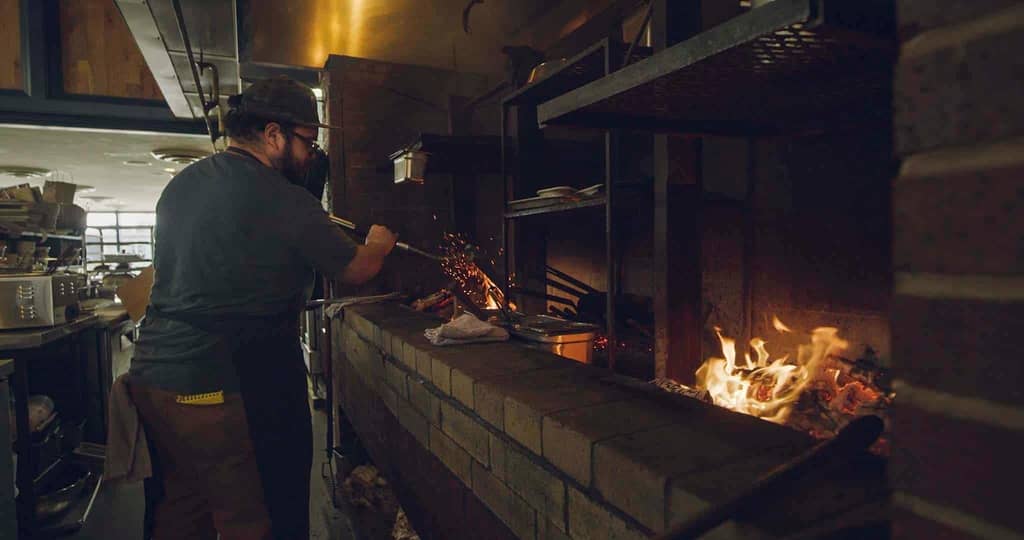
We have lunch in the low-ceiling kitchen of the original main house, with its massive open fireplace and windows looking out over the property. Siblings and grandchildren, sons, daughters, spouses, and a friend or two, join in lively conversation over sandwiches, fresh lemonade, and homemade cookies. Cowboy hats hang on pegs throughout the cold entry; thick stucco walls are adorned with family photos in sepia tones and old maps. In the living room, glassed bookshelves are overflowing with books.
Ranchers across the country experience depredation of their livestock, horses, sheep, and domestic dogs at the hands of predator species, particularly coyotes. Lethal predator control has long been a part of any ranch management plan. However, new research is showing that indiscriminate killing of predators may have the unintended effect of creating a more robust population of coyotes, among other unexpected side effects. Many ranchers have begun to consider alternative, non-lethal methods of protecting their livelihoods. A vast majority still adhere to the traditions passed down from generation to generation.
Robin Giles, the grandson of the ranch’s founder, Alfred Giles, shares his experience as a rancher and his thoughts about predator hunting contests:
“We are people of the land. I don’t think many people understand that. When you have lived on these places your whole life, cared for them, and made a living from them, then you turn into a person of the land. My grandfather and grandmother had started it, my mother and father have continued it, and now we have our next generation and another generation below that. We don’t look at the land as something as we own. We belong to the land. This place has given me more purpose and happier life.
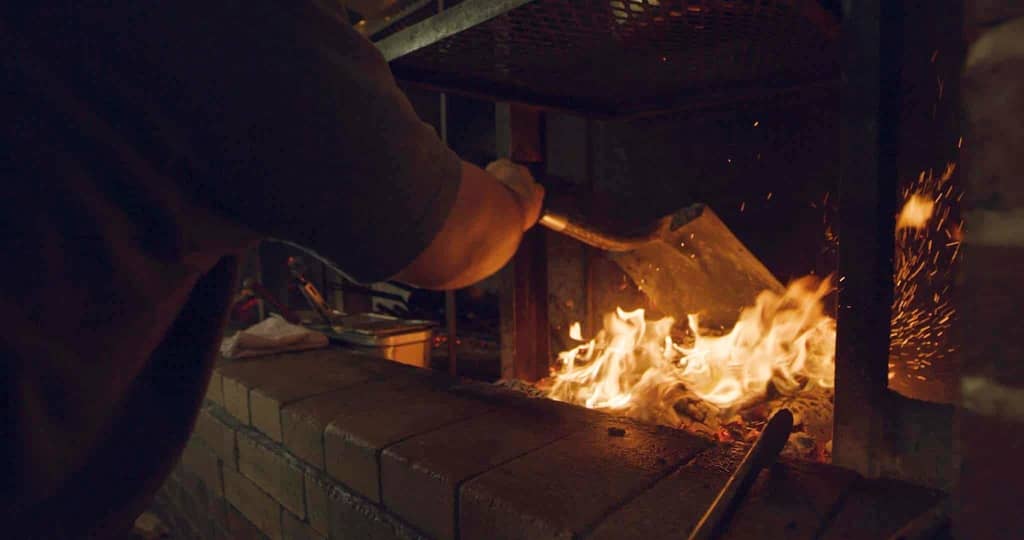
Our small stock are very susceptible to predation by our most common predator, the coyote. Someone said, when the last human dies, they’ll be a coyote there to eat on his bones. I have so much respect for their cunning and ability to make a living on me. But we do have to control our numbers. If we have a killing coyote on our property, we have to take care of it. We have learned many times that if we do not control them, he will eat about $50,000 worth of livestock per year. If that continues, then we are out of business, so we have to continue. We have guard dogs that do their job, but guard dogs are very time-consuming for us. Because we have 37-40 pastures in this place. With cattle, sheep and goats. You are usually hunting one problem animal at a time.
How do predator contests help? Honestly, it started out about control, but now it’s all sport. The thing that worries me most about the predator contests is that it might give a bad connotation to what we are doing. We might be demonized for what we do. You might be able to see why we do it, but with them, competing like that—it can give us problems. But I don’t think they are hurting the species that much. Honestly, killing all those animals is actually probably helping the species by helping the ones that are left.
Random killing as a management tool that doesn’t work. It’s sort of getting out of hand. It brings so much dag gum money a lot of people are trying to do it. Their prize is getting so big it is attracting a totally different kind of person and a totally different kind of attitude. It’s monetarily driven. This one is just getting out of hand. This seems to be gross killing. We’ll end up paying for it and not being able to do what we need to do. What do they even do with these many animals?
I have tremendous respect for the coyote. He doesn’t kill for fun. I mean the neighbour’s dog comes up here and eats 30 animals in one night. I have more respect for the coyote for any other animal…. and a lot of humans.”
Are Predator Hunting Contests Hunting?
Hunting is a tradition steeped in rituals, rites of passage, rich teaching, and bonding from parent to child, and at its most elemental, fulfils our basic need: food.
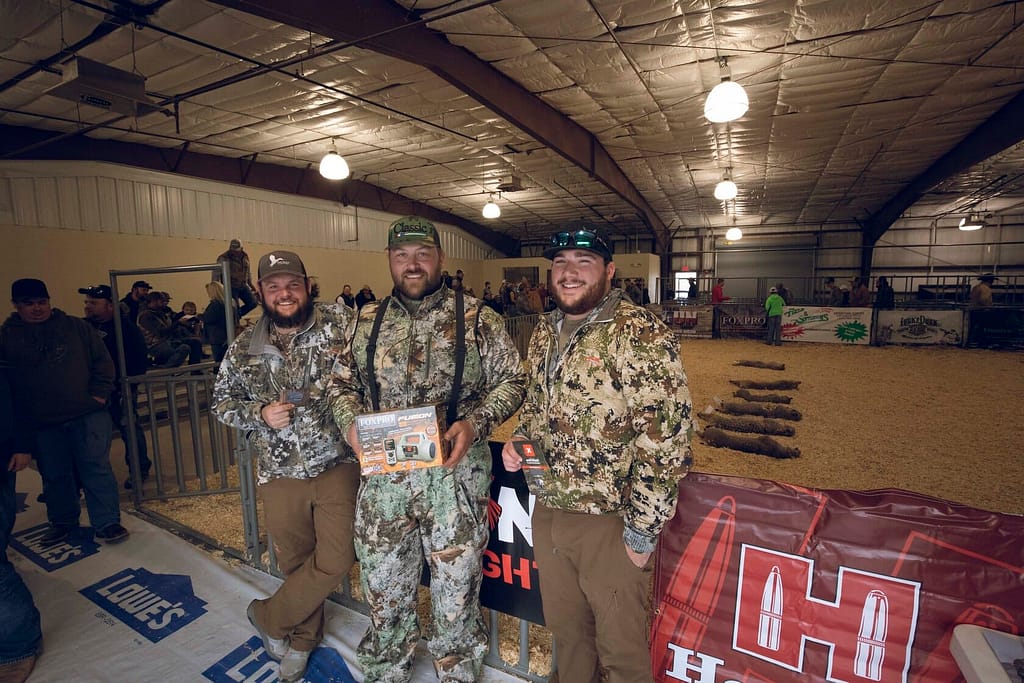
“Wild boar flautas with adadero, crema, cortido and cilantro.” “Italian Sub with wagyu bologna, spicy nilgai antelope, giadiniera, lettuce, onion on a grilled roll.” Perhaps these menu items at Dai Due Butcher Shop and Supper Club do not resemble what our forefathers ate after a successful day hunting, but proprietor Jesse Griffith (read Nat Geo profile on Dai Due) sticks to a similar set of values. All the food served here is sustainable, and regional, with as much of the animals used as possible. Griffith is a modern hunter whose workshops on hunting to cooking what you kill appeal to a wide range of individuals hoping to make a closer connection to their food.
I sat down with Jesse during the hour before his restaurant opened. The sous chefs are busy chopping and prepping as background noise. It seems difficult for him to have his back to them.
“There is a definite hunting culture in Texas that goes back at least a century. Rifles, and gun racks were a thing. You would hunt with your father in the morning and go to school right after. Gunracks in the back of your pickup were normal. Ironically, that was when there were no school shootings. Opening day of dove or deer season was celebrated, everyone went.”
He continues: “I think politics have changed how hunting is perceived both outsides and within the hunting community. Here, we are trying to tell both stories and show both perspectives. Such as admitting that there are problems in hunting and at the same time same there is nothing wrong with hunting. You may have an ignorant view of what it is, hunting can be very bad. Sometimes it’s done poorly. Like the perception of the redneck drunken trophy hunter. It’s a caricature but it exists. There are also hunters who have hunted with their families for generations and it’s a thing they do every year together and they eat what they kill. And that’s also a thing. You can’t combine the entire group. There are bad apples in everything.”
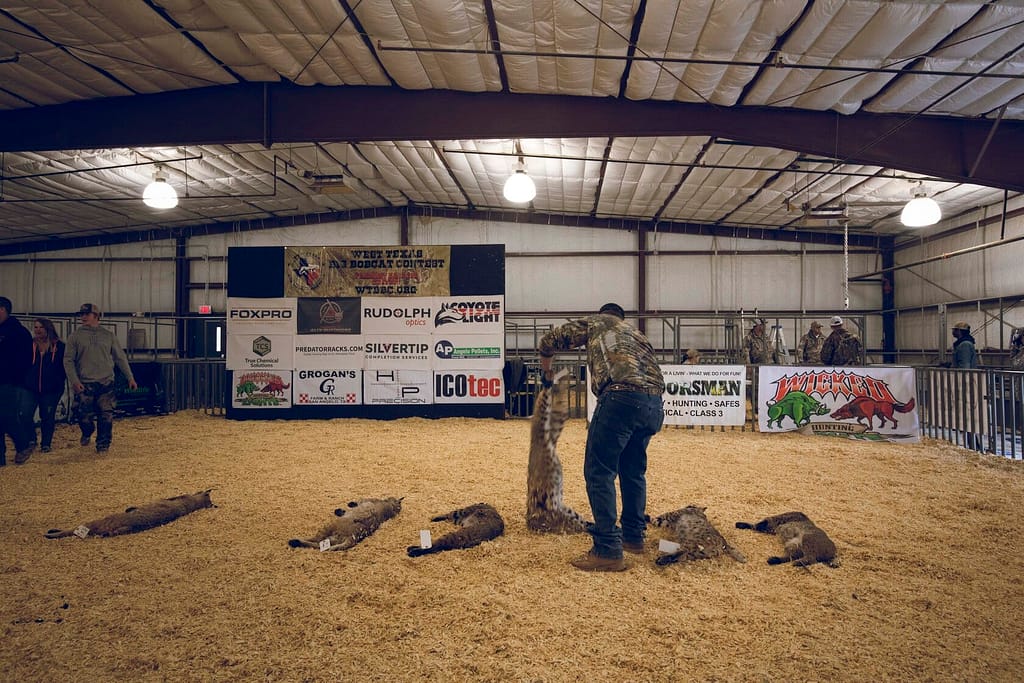
Hunters have been giving the bad impression that we just love guns and relish the killing of animals—there isn’t any nuance allowed. If you eat meat, killing the animal yourself is, in my opinion, the best possible way. Consider the three ways an animal, such as a deer can die:
1. She can live in the wild and die naturally- which means it will likely be sick and before its dead will be consumed by fire ants, and coyotes, from the back forward in a brutally painful way.
2. The farmed animal has a posh lifestyle is fed and has a safe place to sleep. Then, one day, the gets on a truck, takes a terrifying, drives to a death slaughterhouse and dies quickly but has to wait in line.
3. Hunting. Deer are in a field and hanging out with their friends and suddenly are shot and killed. Or, they run a bit, suffer for 30 minutes and are dead.
I think people who tend to vilify hunting tend to personify animals a lot. And so, if you ask them to personify animal death, what would you choose?”
When I show Jesse the piles of unusable carcasses littering a vast parking lot, he says, “I’ve talked about how for me hunting is about respecting the animal.” Looking at a photo from that weekend’s predator hunt and shaking his head, he states: “There is nothing happening there. That is a transaction…. I mean, that is just disgusting.”
The nature of predator hunting contests appears to fly in the face of wanton waste and the fair chase foundation of traditional hunting ethics. But many hunters and hunting organizations do not count predators such as wolves, coyote, bobcats, and foxes when they are setting their ethics guidelines, making a distinction between “game” animals and “varmint” reduction strategies.
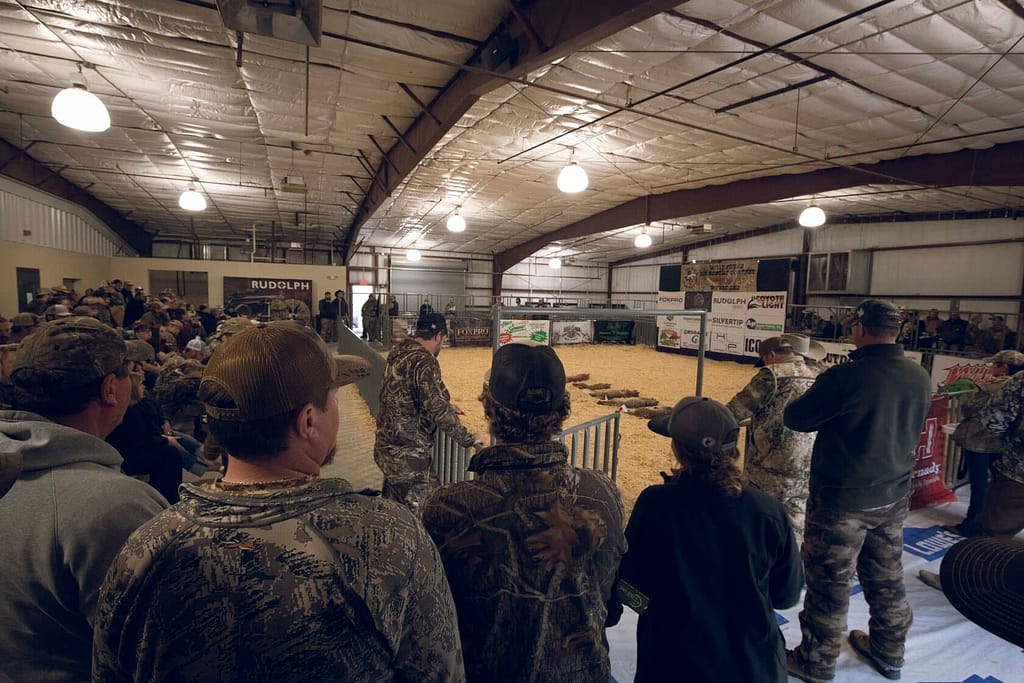
Whether the science precludes or motivates activism is irrelevant. The hard of evidence of wanton waste, carnival-style revelry, and high-value prizes over an unfounded massacre of hundreds upon hundreds of animals, clearly does not align with the ethical traditions of hunting or wildlife management in its contemporary form.
Boone and Crockett, one of the oldest hunting organizations in the country, covers, in great detail, their guidelines for members’ ethical behavior. Even in this statement to the Humane Society, which emphasizes their distinction between game hunting and “varmint” reduction, they still call for a “humane approach.”
‘We do thank HSUS for acknowledging the Club’s leadership role in promoting fair chase hunting and for recognizing that sportsmen do hold themselves to a high standard of fair chase when hunting game animals and game birds. The Club does encourage sportsmen, when participating in predator and varmint reductions, to do so with a humane approach.”
-Keith Balfourd, Director of Marketing, Boone and Crockett Club – 2017 NRA Hunters Leadership Forum
To the most influential hunting organization in the country, predator-killing contests are not hunting. In addition, The Wildlife Society, “leaders in wildlife science, management and conservation” since 1937 has presented this issue statement regarding wildlife killing contests.
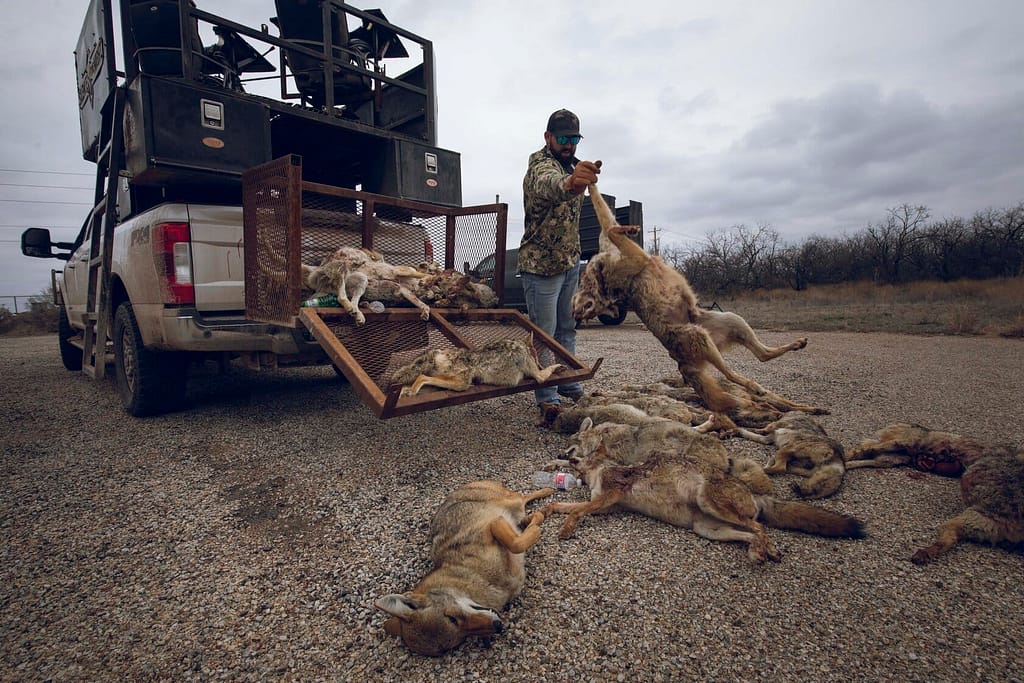
They oppose contests that “intentionally wound animals in a manner that causes excess pain and suffering; kill parents resulting in orphaned, dependent young; or devalue wildlife by showing disrespectful photos of piles of dead animals.”
Changing the Laws
The popularity of predator-killing contests is on the rise, even in the face of mounting research that shows no ecological benefit and despite the lack of contribution to any actual predatory management strategy.
Even the Pennsylvania Game Commission has come to this conclusion: “After decades of using predator control (such as paying bounties) with no effect, and the emergence of wildlife management as a science, the agency finally accepted the reality that predator control does not work.” Yet, there has been no effort to ban predator-killing contests, even those that mistakenly cite wildlife management as the basis for their existence.
Proponents of the contests consistently point out that they are not acting illegally, and they have simply misunderstood victims of vocal animal rights activists. They correctly affirm that their activities are protected (and in many cases, encouraged and supported) by state and federal laws, but their argument that they are victims of myopic activists is beginning to show cracks.
Policymakers, once finding themselves caught in the crosshairs, are beginning to see a clear path to why these contests are not consistent with science-based, ethical wildlife management practices. In recent years, coalitions and leadership by state land boards, governors, and state representatives haven taken steps to make predator-killing contests illegal. Most recently, Washington and Colorado enacted bans on wildlife killing competitions, joining California, New Mexico, Massachusetts, Vermont and Arizona; and a similar bill is pending in New York.
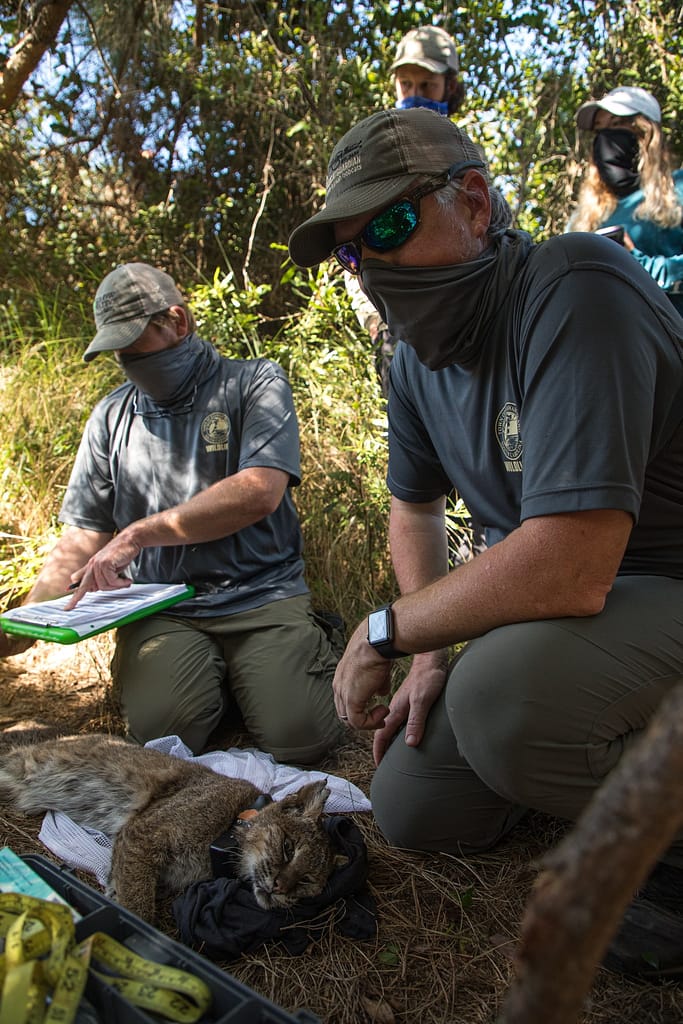
Still, the unregulated killing for the sport continues to be lawful on federal public lands in 43 of 50 states. Coyotes are the most targeted, with an estimated half-million coyotes intentionally killed in the United States. According to Project Coyote’s Camilla Fox, this equates to one coyote every minute of every day. Fox has spearheaded an effort to work with California ranchers to identify and utilize alternative methods of predator control such as specialized fencing and guard animals – including livestock guard dogs bred specifically for the purpose of protecting livestock as well as llamas and alpacas that have their origins in South America as sheep protectors.
While some states such as California and Oregon have made strides in creating alternatives to lethal management and putting an end to wildlife killing contests, their close neighbour, Idaho, is taking the opposite approach. Since wolves were delisted as endangered in 2008, Idaho has sought to expand its wolf management policy with Bill 1247 which would lift regulations for killing wolves in zones with a high concentration of depredation on ranch lands. As of this writing in late October 2020, the bill has passed unanimously in the state house and is now up for consideration in the Senate. If it passes, wolves in these zones can be hunted, trapped, or killed by any method, at any time, for any reason. On a national level, the Trump administration has stripped gray wolves from all federal protections, allowing all states to open up for trophy hunting, trapping, and killing contests targeting wolves as seen in Idaho.
In contrast, New Mexico’s Stephanie Garcia Richards, the first female, first Latina, and first educator to serve as New Mexico’s Commissioner of Public Lands, signed her first executive order as Land Commissioner to ban hunting contests on the 9 million acres of state trust land in the state in January 2019. Speaking about her identifying firsts, Richards says: “And that matters because it really influences the way I approach this job. The way that I approach decisions that I make. It speaks to representation and seeing the little girl who is interested in protecting coyotes, seeing someone that looks like her at the top.”
At her signing, Garcia Richards said: “The position of the State Land Office under my direction is that all wildlife is sacred, and all wildlife plays a vital role in our environment. This action does not restrict a rancher’s ability to humanely remove or kill an animal causing harm to agriculture or domestic pets on State Trust Lands. What we are addressing is the blood sport where participants kill dozens of animals without sound justification and play for cash and prizes.”
Other decision-makers have weighed in as they move to outlaw killing contests on public lands in their states. Says, Montana State Senator Mike Phillips, a hunter and wildlife biologist: “Predator-killing contests are abominations, an insult to the history of life on this planet. If you are going to remove wolves or coyotes because there are identifiable problems, okay, do it if it’s necessary, but be strategic. Predator killing contests turn that on its head. When is needless, thoughtless killing ever justified?”
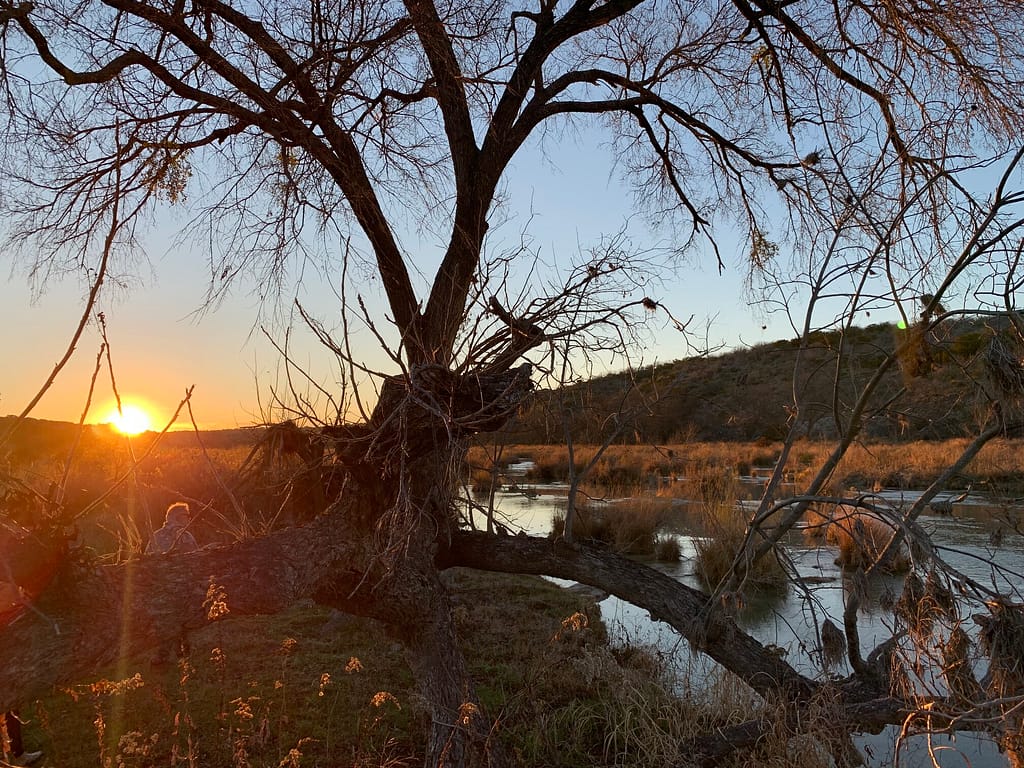
Several states are considering banning predator-killing contests and there is a growing movement to create federal legislation that would forbid contests from taking place on federal public lands. Organizers are determined and hopeful that when the public understands what is happening on land that they have a stake in, a groundswell of support will tip the balance.
Despite the reputation and traditional values of hunters and ranchers being at stake, some will still debate the science, and politics will influence lawmaking. Yet, at the end of the day, the sheer number of piled-up carcasses across the entire United States, is, when witnessed with eyes wide open, morally indefensible. As Aldo Leopold, author of the 1963 Wildlife Management in the National Parks said, “Ethical behaviour is doing the right thing when no one else is watching—even when doing the wrong thing is legal.”
“This story was the cover feature in Earth Island Journal, Summer 2022”






























